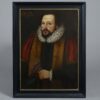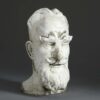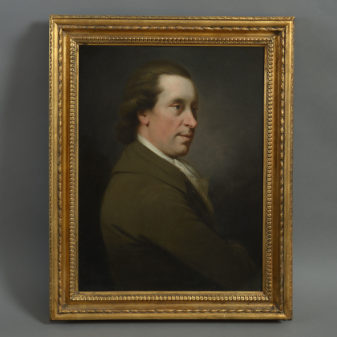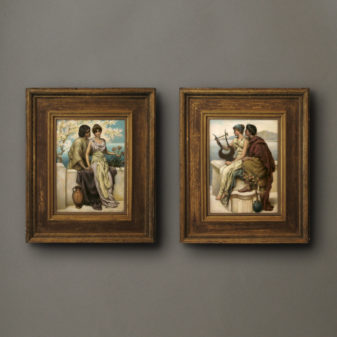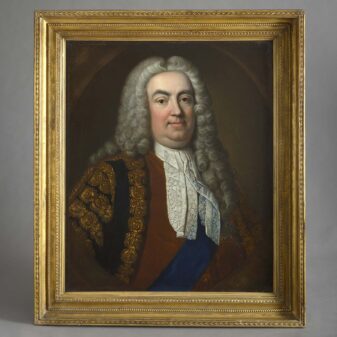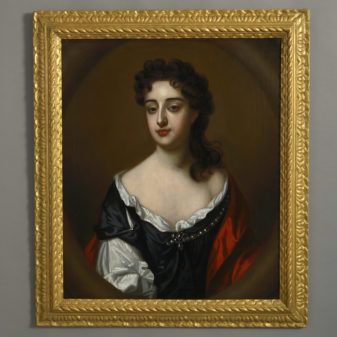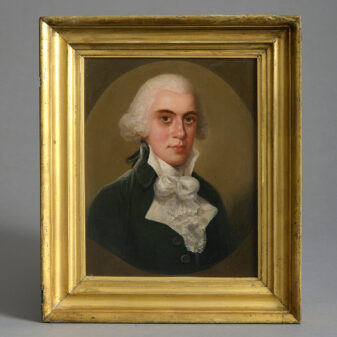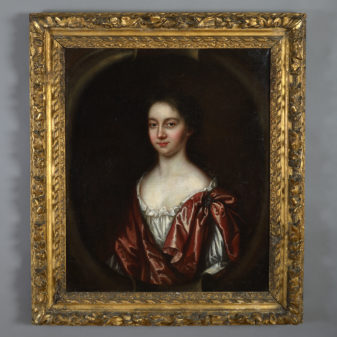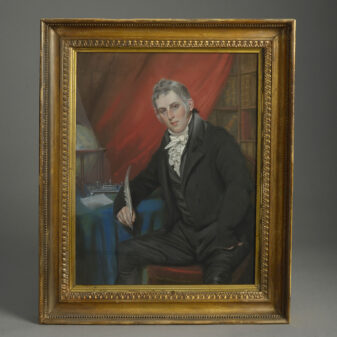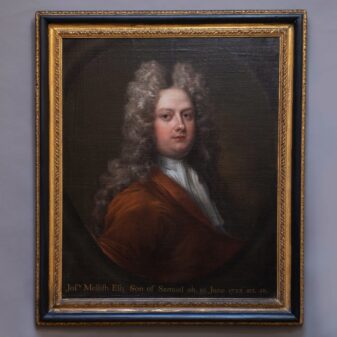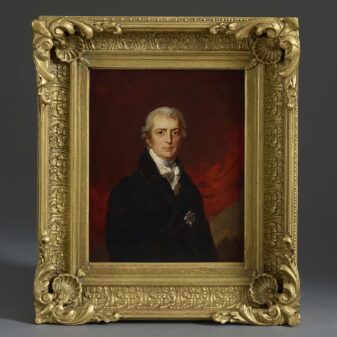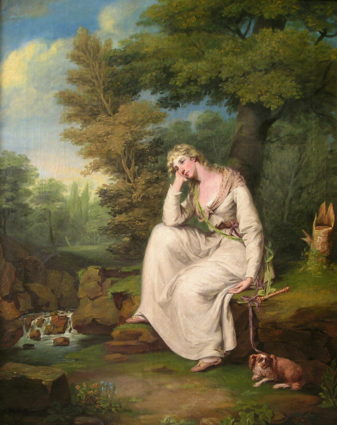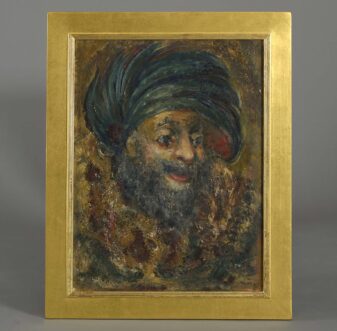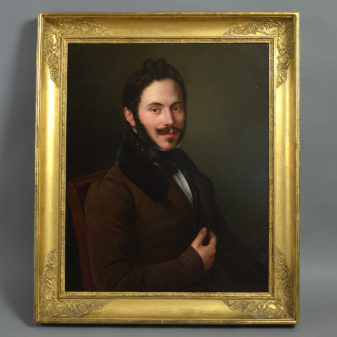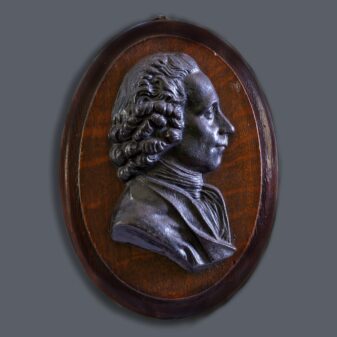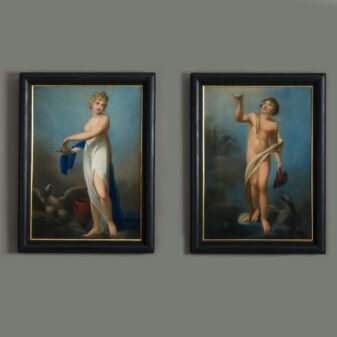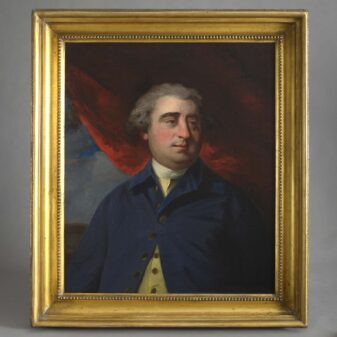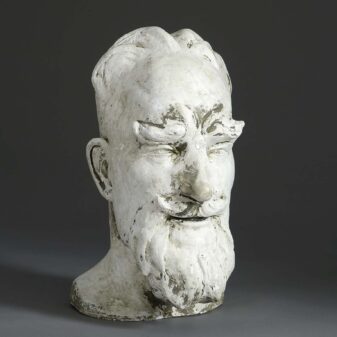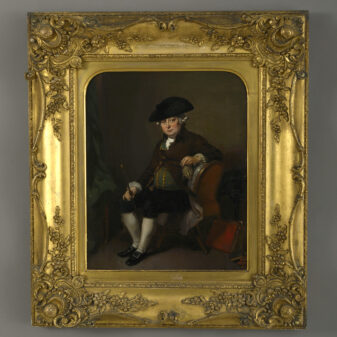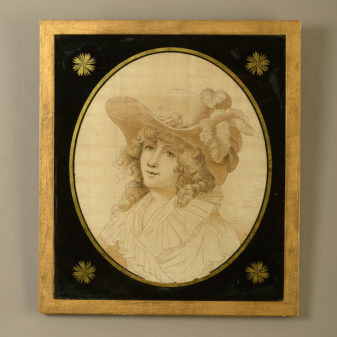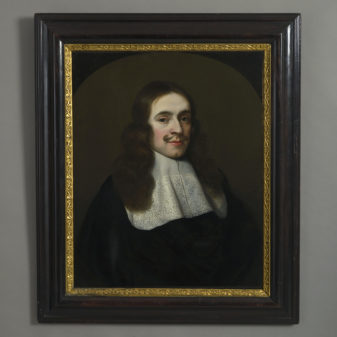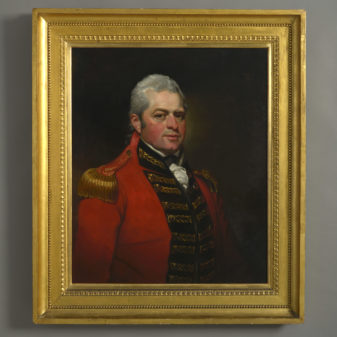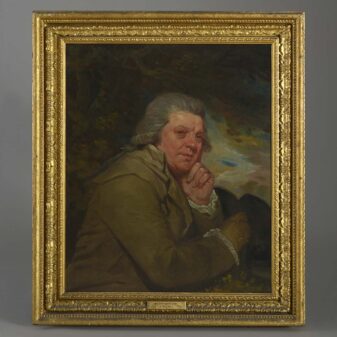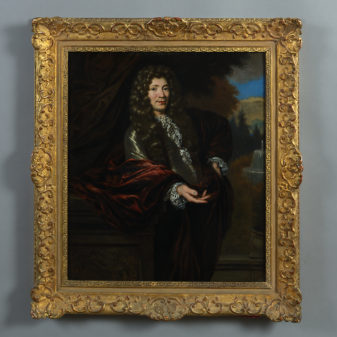Mid-18th Century, England
George Knapton (1698-1778) Portrait of William Howard (d.1776)
£7,500
1 in stock
Height 28 inches (71 cm)
Width 24 3/4 inches (63 cm)
Depth 2 1/2 inches (6 cm)
George Knapton (1698-1778)
Portrait of William Howard (d.1776)
Oil on canvas; signed lower left; held in a 19th century frame.
Dimensions refer to size of frame.
Provenance: Possibly by descent in the family of the sitter’s mother; Private Collection, UK
William was the natural son of Sir Charles Howard (c.1696-1765), army officer, politician, and 2nd son of Charles Howard 3rd Earl of Carlisle. His father never married and died in Bath being interred in the family vault at Castle Howard. William is named in his will of 1765 where he is recorded as a Captain and though details of his life are obscure it is clear he is the Captain William Howard in the 17th Regiment of Foot who ultimately settled in New Jersey, USA.
He gained a captaincy in 1756 and travelled to America with his regiment, serving throughout the Seven Years War. In June 1767, on the eve of the regiment’s return to England, he applied to General Gage for permission to sell out, apparently due to his health. (Gage Papers, Clements Library, Gage to Howard June 27, 1767). This desire to leave the army, together with a property purchase around this time, suggests he received some form of inheritance from the estate of his father who died two years earlier.
He settled near Princeton in a house that became known, and still is, as “Castle Howard”, with 200 acres of land and some woodland. According to a post-Revolutionary War affidavit prepared by President Witherspoon of Princeton College, Captain Howard “lived in a genteel manner” and “was generally believed to be wealthy.” He married Sarah Hazard, related to a merchant family with interests in New York and Philadelphia.
Howard played a very small role in the Revolutionary crisis, though his views were well known to locals. By 1776, according to tradition, he was a victim to gout and was confined to his house. While he was an ardent Whig with pro-American sympathies, his wife was an enthusiastic Loyalist, and insisted on entertaining British officers who passed through the community. Often forced to listen to their unwelcome political views, he had painted over his mantel “No Tory Talk Here”. He died some time in 1776, and his wife promptly married another British officer, but fled town for England the following year during the Battle of Princeton.
This portrait was probably commissioned as a result of Sir Charles Howard’s sister Elizabeth being painted by George Knapton in 1730 whilst in Italy. Knapton’s return to England in 1732 resulted in him using his wealthy contacts to elicit fresh commissions and the portrait could have been a gift to the sitter’s mother. It is a typically charming image that Knapton excelled in and compares well to others of the period.
George Knapton was an apprentice to the artist Jonathan Richardson and attended the St. Martin’s Lane Academy. On his return from Italy in 1732 his work was much sought after and in 1736 he was appointed a foundation member and official painter to the Dilettanti Society. A very large group portrait of the Princess of Wales and her children painted in 1751 is in the Royal collection.

